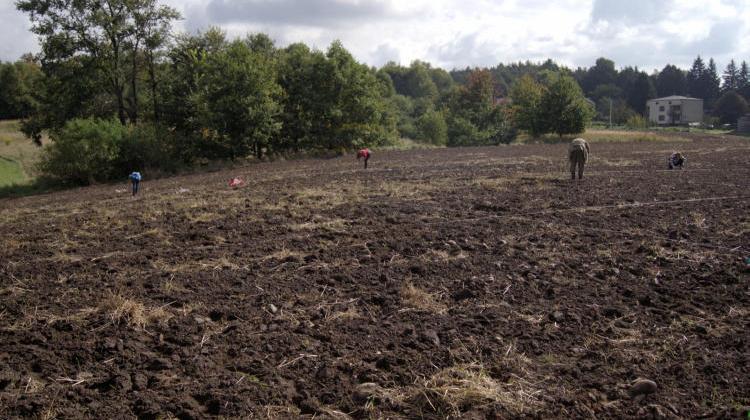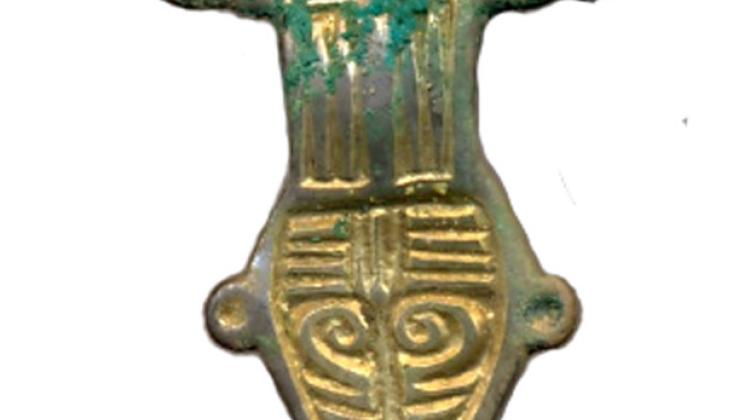Archaeologists discovered previously unknown stronghold in Łódź Province

With the aid of aerial reconnaissance and geomagnetic methods, a team of archaeologists led by Dr. Jerzy Sikora from the Institute of Archaeology, University of Łódź discovered the probable location of a previously unknown stronghold in Stare Skoszewy.
The structure was found during the detailed study of a settlement discovered by archaeologists in the first half of the 20th century, and explored 30 years ago. Years later, archaeologists returned to the site in the project "Non-invasive study of stronghold settlements in Central Poland", carried out in 2013 by the Łódź branch of the Scientific Association of Polish Archaeologists, with funding from the Ministry of Culture under priority Protection of Archaeological Monuments. Settlement in the Stare Skoszewy is the nearest such site to Łódź. It is considered a relic of the defence residence of knights and nobility of the late Middle Ages and modern times, initially associated with Piotr Tłuk of Stryków, and later with Warszycki and Dunin families, including Piotr Dunin, commander of Polish troops from the Thirteen Years\' War period.
"In the well-known settlement we performed a number of non-invasive tests, including magnetic geophysical survey, a set of aerial photographs, surface survey, geological and geomorphological study and geodetic measurements. In addition, we conducted an analysis of archival aerial photographs and orthophotomaps available from various sources, including public online map services, as well as wartime German orthophotomaps" - explained Dr. Sikora.
Already at this stage, archaeologists were satisfied with the results. They were able to reconstruct the full outline of the settlement, now partially destroyed as a result of cultivation. Both aerial photographs and geophysical survey documented preserved traces of bases damaged walls. In addition, it turned out that the interior of the settlement was divided by inner wall. In the square, register geophysical anomalies suggested a relic of a large object with a length of over 45 m. Archaeologists initially interpret it as a remnant of the foundations of an early modern mansion.
"Even more interesting were the findings in the area just north of the settlement. We recorded characteristic pattern of magnetic anomalies and corresponding aerial features. They formed an oval outline, with a diameter of approximately 38x45 m. Characteristic form of this object suggests that it was another settlement" - said Dr. Sikora.
The newly discovered object is much smaller than the previously known settlement. Preliminary analyses do not allow to determine the exact age of the settlement, because on the surface archaeologists found pottery pieces dating from the Middle Ages to the Modern period. According to the discoverers, it may be a relic of a small early Medieval fortalice or a small noble house from the late Middle Ages and Modern period. Fascinating for explorers is the relationship between the new discovery and the larger settlement.
Archaeologists speculate that Piotr Tłuk or one of his successors erected a motte castle typical for this era, a motte, perhaps surrounded by a moat, on which his mansion was located. Perhaps the older, extensive settlement did not serve the purposes of knights’ residence, and therefore it was decided to erect the new structure. At some period it has been abandoned and modern mansion erected on the square of the old, early medieval settlement, using its walls as part of the fortifications, which protected against hostile neighbours.
"Both proposed hypotheses should now be verified by the excavations, which would allow a more precise determination of the chronology and nature of this object" - concluded Dr. Sikora.
PAP - Science and Scholarship in Poland
szz/ agt/ mrt/
tr. RL
Przed dodaniem komentarza prosimy o zapoznanie z Regulaminem forum serwisu Nauka w Polsce.


















